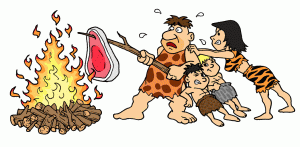Fire Pits 101
Do you ever crave for that cozy outdoor feeling, warm by the fire with your favorite cup ‘o cocoa, the sound of crackling wood while roasting your marshmallows?
With cold weather sweeping our way, I know I do. But with work, holiday mad rush, and so many things to do, I can hardly find the time to go out in the woods and build a fire.
THANK GOD FOR FIRE PITS!
Nowadays you can relive those beach bonfire and campfire moments at the convenience of your home through the wonderful man-made creation that is – Fire pits.
Simply put, a fire pit is an elevated bowl you can place in your patio or backyard to mimic a campfire/bonfire without ruining your lawn or patio floor.
Since you have a vessel to put your firewood in, fire pits provide a safe and trouble-free alternative to digging a hole in your backyard for a bonfire.
Having a fire pit around the house is also great for bonding with friends, family and even kids as screens and covers are available for added fire pit safety. This helps prevent ashes from scattering around while you can still view the fire and cozy up around it.
My boys love getting the fire pit started and inviting their friends over to roast marshmallows and make s’mores. With the tent pitched at our backyard and fire pit ready to burn, they get to enjoy ‘outdoor adventure’ anytime they please.
Sounds cool, I’m ready to burn!
Not so fast now. Like any other structure that has to do with fire, we should always keep fire safety in mind. Look for a suitable place to put your fire pit. It would be good to have a large area that can accommodate your guests and also provide enough space so you won’t be too close to the fire. Make sure you place your fire pit away from anything that can catch fire such as dry grass, a pile of leaves, low hanging branches and the like. If your grass is dry or you plan to setup your fire pit on a wooden deck, it would be best to line the ground with bricks, stone slabs or a fire pit pad to avoid ashes dropping on the wood.
Here are some reminders to a safe and happy fire pit:
1. Read your fire pit manual
2. Find a suitable place for your fire pit
3. Know the local laws and regulations regarding outdoor fires in your area
4. Use a screen to avoid flying embers when the wind blows
5. Do not burn toxic material and make sure you are using fire-safe wood.
6. Do not put out fires with water as the sudden change in temperature can damage your fire pit. You can use dirt or sand to put out the fire.
7. Use a heavy, weather-proof cover to protect your fire pit when exposed to elements.
Oh, and be sure to have a fire extinguisher ready, just in case.
There’s so many of ‘em out there. What would I choose? HELP!
Now you find yourself browsing through a fire pit section ready to just grab one and start burning when you see how many different kinds there are. Fire pits these days are not just your regular metal basin with feet sticking out. Manufacturers have experimented on using different kinds of material and designs. Some can be your regular, run-off-the-mill cast iron vessel while there are the decorative conversation pieces. Options, options, options. How would I know what to pick?
Well, here I am to save the day!
There are three basic considerations in choosing your fire pit – Size, Make and Design.
Once you have found a safe and open space to place your fire pit, you can now measure the area to determine the size of the fire pit it can accommodate. Make sure you allow enough room for people to gather round without having them too close to the fire. Some fire pits are made for small backyards, thus having smaller fireboxes or bowls to put the logs in. You may need to find smaller logs or cut up the fire logs yourself to make them fit.
After determining the size of your fire pit, you can now choose what material you want your fire pit to be made of. Here’s a table for a quick look at the pros and cons of each material.
|
Make |
+ |
– |
|
Steel |
Stainless steel has rust resistance so it’s good if you plan to leave your fire pit outside, exposed to elements.Has a nice, shiny sheen. | Thinner gauges and sheet steel does not last long (look at gauge number, the lower the gauge number, the thicker the steel). |
|
Cast Iron / Cast Aluminum |
Rust resistantAffordable alternative to steel (thinner gauges) | Heavier than most fire pits |
|
Copper |
Beautiful and elegantLasts longLighter than most fire pits | Tarnishes over timeNeeds copper cleaning products |
|
Stone / Mosaic / Granite |
Decorative, stylish | Bowl is usually made out of metal so like other fire pits, will be extra hot |
Consider the frequency of your fire pit’s use in selecting the make. You may opt for a thinner gauge if you don’t plan to put fire in it regularly and a copper fire pit may be more suitable for you if you plan to move your fire pit around. Choosing the right make might even save you bucks.
Finally, the design of your fire pit would really depend on the feel you want to create and it usually goes hand in hand with picking your fire pit’s material. Some people select copper as it exudes a lavish feeling and makes good for a posh design. Others prefer cast iron for that rustic, provincial appeal. Whatever design you do choose, make sure it’ll be something you’ll love for years to come.
Surely with your new fire pit you would now have plenty of new memories to make with friends and family!





Looking forward to trying the Garlic, Turkey burgers. My family uses the firepit all year round. Great way to have friends finally sit down at the end of a great day.